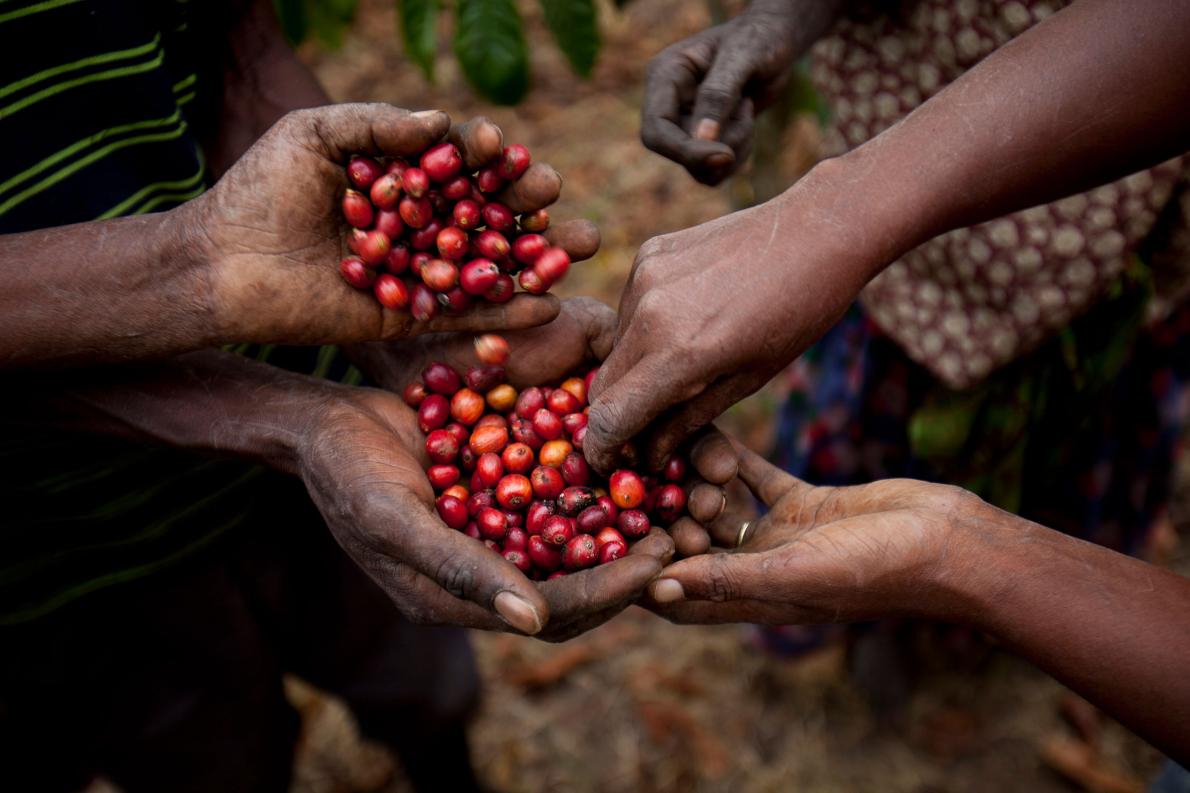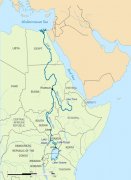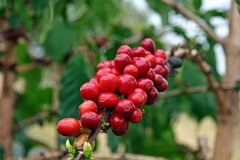The oldest and most respected coffee producing area in East Africa-the coffee crisis in Uganda
For professional baristas, please follow the coffee workshop (Wechat official account cafe_style)

Coffee farmers in Kasese, Uganda, harvest ripe coffee cherries. PHOTOGRAPH BY JONATHAN TORGOVNIK, GETTY IMAGES
Uganda is pinning its hopes on the most valuable crops but must overcome the obstacles to climate change.
Sam Massa (Sam Massa), ── of Uganda, does not drink coffee. Like many Ugandans, he prefers seasoned tea with milk. And like many Ugandans, he said: "We are part of coffee, and coffee is in our blood."
Massa lives on the hilltop of an extinct volcano straddling the border between Uganda and Kenya, and the mud-brick hut in the middle of the coffee grove is his home. Some of the trees here were planted by his great-grandfather over a hundred years ago. Massa's ancestors were coffee farmers like him, and almost all of his annual income came from coffee beans, which ended up as coffee drunk by people in the United States and other distant countries.
This place is one of the oldest and most respected coffee producing areas in East Africa. The air is fresh and cool, and the hillside can be seen everywhere with continuous scenery and sparkling waterfalls. But the mountain is about to get into trouble. In fact, the trouble has come to Massa's door.
Uganda has always had two rainy seasons, in 3muri-May and 10muri-December. Small farms in East Africa, like those in Massa, are almost irrigated, that is, crops, including coffee, are grown entirely on rainfall. But in the second rainy season of 2016, there was little rain in Massa's area, and when the coffee was harvested in January 2017, the harvest was very poor. This is not an accidental anomaly. "the weather has been abnormal in the past few years," he said. "
"rainfall patterns have completely changed in the past 20 years," he said. "it rains when you don't expect it. When it should rain, it will be sunshine or drought. "
As a result, the Massa family are living a hard life. If you don't have three meals, you usually eat your own bananas. Medicine is a rare luxury. There is no way to buy the tools and fertilizers needed for the upcoming planting season. What bothers Massa most is that for his five children, he can only afford four of them to go to school, and his eldest son is a junior high school student, but he stays at home.
In addition to the coffee tree, Massa once had another important asset: a healthy cow, raised in the barn next to the house, which could provide precious fresh milk. However, after the poor coffee harvest, Massa had to sell the cow in order to pay for his son's tuition.
"I really couldn't help it at that time," he said. "I hope God will give me another cow."

Fresh coffee berries harvested in western Uganda. This country is the second largest coffee producer in Africa after Ethiopia and the largest robastian coffee grower on the continent. PHOTOGRAPH BY TREVOR SNAPP, BLOOMBERG VIA GETTY IMAGES
Coffee and climate
Massa's story may be familiar to many coffee farmers in Uganda and around the world. Coffee is very vulnerable to climate change. According to the newly published global survey of coffee research, rising temperatures and unstable rainfall have increased the number and quality of coffee plants and reduced the number and quality of coffee beans. Overall, the world's coffee production area may be reduced by 50% due to climate pressures by 2050, the survey found. This will deal a severe blow to the global supply of coffee, which is already struggling to catch up with demand. A paper published in the journal Nature in June 2017 made similar predictions for Ethiopia, fully highlighting the situation in East Africa.
For coffee addicts in the United States and Europe, these shocks are likely to cost a little more money for coffee. But for the world's 25 million coffee farmers, most of whom are small farmers like Massa, the consequences will be much more frightening.
Uganda is particularly vulnerable because coffee is the economic foundation of the country. Now scientists, government officials, farmers and entrepreneurs, from the top of Mount Mount Elgon to downtown Kampala, to remote areas still plagued by rebel leader Joseph Joseph Kony, are looking for ways to save the coffee industry from climate change.
Important Notice :
前街咖啡 FrontStreet Coffee has moved to new addredd:
FrontStreet Coffee Address: 315,Donghua East Road,GuangZhou
Tel:020 38364473
- Prev

Uganda / West Nile region / White Nile Coffee rare washed Ugandan coffee beans
Professional baristas please pay attention to the coffee workshop (Wechat official account cafe_style) the Nile is the mother river that gave birth to the ancient civilization of Egypt, and the sediment brought from the upstream has become fertile soil downstream, with watersheds reaching nine countries. The White Nile, one of the two tributaries of the upper reaches of the Nile (the other is the Blue Nile), originates from Lake Victoria and is made by light-colored clay suspended in the water.
- Next

What is the uniqueness of the flavor of Columbia coffee Huilan? description of Huilan Coffee Flavor
For the exchange of professional baristas, please follow the coffee workshop (Wechat official account cafe_style) Colombia huila of Colombia: located in southwestern Colombia, it is one of the major coffee growing areas. Because there are famous coffee cultivation places in Huilan area, the names of small areas become brand names and circulate. Although the cultivation conditions in this area
Related
- Detailed explanation of Jadeite planting Land in Panamanian Jadeite Manor introduction to the grading system of Jadeite competitive bidding, Red bid, Green bid and Rose Summer
- Story of Coffee planting in Brenka region of Costa Rica Stonehenge Manor anaerobic heavy honey treatment of flavor mouth
- What's on the barrel of Blue Mountain Coffee beans?
- Can American coffee also pull flowers? How to use hot American style to pull out a good-looking pattern?
- Can you make a cold extract with coffee beans? What is the right proportion for cold-extracted coffee formula?
- Indonesian PWN Gold Mandrine Coffee Origin Features Flavor How to Chong? Mandolin coffee is American.
- A brief introduction to the flavor characteristics of Brazilian yellow bourbon coffee beans
- What is the effect of different water quality on the flavor of cold-extracted coffee? What kind of water is best for brewing coffee?
- Why do you think of Rose Summer whenever you mention Panamanian coffee?
- Introduction to the characteristics of authentic blue mountain coffee bean producing areas? What is the CIB Coffee Authority in Jamaica?

